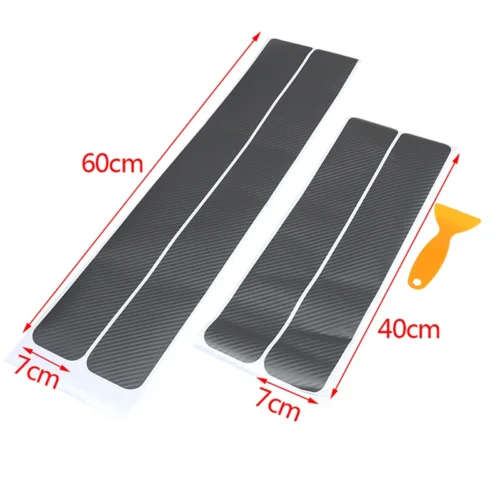Car Leather Vinyl Repair Kit
$6.10
Did you like this product? Add to favorites now and follow the product.
(+800) 1234 5678 90 Start Live Chat
Description
Understanding Car Leather and Vinyl Repair Kits
Car leather and vinyl repair kits are essential tools for maintaining the aesthetic and functional quality of your vehicle’s interior. These kits are designed to address minor damages such as scratches, tears, and discoloration, providing a cost-effective alternative to professional repairs. They typically include a range of components that work together to restore the material to its original state.
The primary components of a car leather and vinyl repair kit usually include adhesive, filler compounds, colorants, applicators, and protective finishes. Adhesive is used to bond the torn or damaged sections together, ensuring that the repair is secure. Filler compounds help to fill in any gaps or holes, creating a smooth surface. Colorants are crucial for matching the repaired area to the original color of the leather or vinyl, while applicators assist in the precise application of these materials. Protective finishes are applied at the end to seal the repair and protect it from future damage.
There are different types of repair kits available on the market, each designed for specific materials. Kits specifically for leather often include colorants that match the wide range of leather shades, while those for vinyl are formulated to address the unique properties of this synthetic material. Some versatile kits are designed to handle both leather and vinyl, providing a comprehensive solution for various types of interior damage.
The basic principles behind these kits involve adhesion, filler, and color matching. Adhesion ensures that the repair materials bond effectively with the original surface. The filler compounds are used to restore the structural integrity of the damaged area, while color matching ensures that the repair blends seamlessly with the surrounding material. The final protective finish adds durability and resistance to wear and tear.
Using a repair kit offers several benefits, including significant cost savings compared to professional repairs and the convenience of fixing minor damages at home. However, it’s important to recognize the limitations of these kits. Severe damages or extensive wear may require professional intervention to achieve a satisfactory result. Additionally, improper use of a repair kit can sometimes lead to further damage, so it’s crucial to follow the instructions carefully.
Step-by-Step Guide to Repairing Car Leather and Vinyl
Repairing car leather and vinyl can seem daunting, but with a proper car leather vinyl repair kit and a systematic approach, you can achieve professional results. The first step in this process is thorough preparation. Begin by cleaning the damaged area with a suitable cleaner to remove dirt, oil, and grime. Ensure that the area is completely dry before proceeding to avoid any complications with adhesion.
Next, assess the damage. If there are loose flaps or edges, apply a small amount of adhesive from the repair kit to secure them. Press the edges down firmly and allow the adhesive to set as per the manufacturer’s instructions. This step is crucial to creating a stable base for further repairs.
Once the edges are secure, it’s time to address any holes or deep scratches. Apply the filler compound provided in your kit to these areas. Begin with a thin layer, ensuring it is evenly spread across the damage. Allow this layer to dry completely before applying additional layers. Multiple thin layers are generally more effective than a single thick layer, as they dry more uniformly and reduce the risk of cracking.
Color matching is the next critical step. Most repair kits come with a colorant that can be mixed to match the original color of your car’s leather or vinyl. Take your time to mix the colorant carefully, testing it in an inconspicuous area before application. Once you achieve a satisfactory color match, apply the colorant in thin, even layers. Use a sponge or brush for precision, ensuring each layer dries fully before applying the next.
Achieving a smooth finish is essential for a seamless repair. Utilize a texture pad or grain paper, included in many kits, to mimic the original texture of your car’s material. Gently press the pad or paper onto the colored area before it dries completely to imprint the desired texture.
Finally, apply a protective finish to seal your repair work. This step not only enhances the durability of the repair but also helps blend the repaired area with the surrounding material. Follow the instructions provided with your kit for the best results.
To maintain the repaired area, avoid using harsh cleaners or abrasive tools. Regularly clean and condition the leather or vinyl to keep it supple and prevent future damage. If you encounter issues like color mismatch or uneven texture, refer to the troubleshooting tips provided in your repair kit’s manual or seek professional advice to ensure long-lasting results.







Reviews
There are no reviews yet.